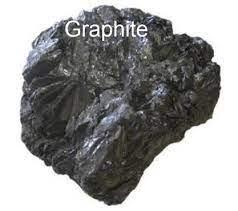Of the world’s natural graphite production, major uses go to batteries, brake linings, lubricants, powdered metals, refractory applications, and steelmaking. Graphite is on the 2023 list of critical minerals that are “essential to the economic and national security…and the absence of which would have significant consequences for the economy or national security” (DOE Critical Material Assessment, July 2023). The top producer of natural graphite is China at 65%, followed by Mozambique, Madagascar, Brazil, Republic of Korea, Canada, Russia and Norway. Synthetic graphite can be used as alternative in some cases but is limited due to higher costs. Although mined graphite is the least costly at the moment, given its strategic uses and the constricting supply from China, the US may consider developing additional synthetic supply chain sources domestically. Compared to the currently available methods for graphite production, LLNL researchers have developed a promising method to produce synthetic graphite that requires far less energy and creates fewer pollutants along the way.
LLNL’s innovation offers an alternate synthetic route to graphite at lower cost using a molten salt mixture of CaCl2-CaCO3-CaO. The synthetic production of graphite and other high-value carbon materials is accomplished in molten salt media via electrochemical reduction and transformation of the carbon from the carbonate ion. The broad electrochemical window of molten salts enables the reduction of carbonate ions. LLNL’s technology combines a molten salt media using calcium-based salts, an economical anode material, and cell design which allows for the regeneration of the carbonate ions in the cell from CO2. The proposed method can produce graphite at temperatures as low as 825°C while utilizing or capturing carbon emissions.
Graphite can be produced at low temperatures (<1000°C) offering distinct advantages over the traditional synthetic processes, which require temperatures up to 3000°C.
The molten calcium salt based production method is economical (e.g., anode material is low cost), generates less pollutants and captures carbon emissions.
This graphite production process can potentially be used alongside power plants, steel mills and other carbon dioxide emitting industrial processes to utilize and convert carbon dioxide to high-value carbon products. The graphite market was valued at $23.73 billion in 2022 and projected to be $37.68 billion in 2028.
Current stage of technology development: TRL 3
LLNL has filed for patent protection on this invention.
U.S. Patent Application No. 2020/0232106 PRODUCTION OF CARBON PRODUCTS IN MOLTEN SALT MEDIA published 7/23/2020.


